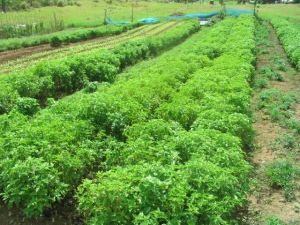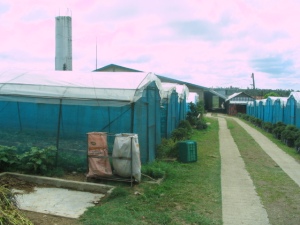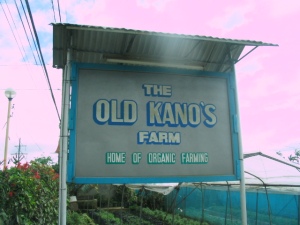Image is excerpt from Google ImagesWho would have thought that a high earning US base Filipino Nurse and a mother would trade all she owned in America, in exchange of her one chance to establish a community building organic farm in Bohol Philippines. Better known as Bohol Bee Farm.
 The lady in the spot light is “Vicky Wallace,” a New York based nurse-turned-farmer.” I loved what she said…
The lady in the spot light is “Vicky Wallace,” a New York based nurse-turned-farmer.” I loved what she said…
“You make good money in the States but you have to ask yourself what is it all about.” I had three jobs. I hardly saw my kids. So after the school year there ended, I brought them here.”
She also said that returning to the Philippines to start a business was one of the best decisions she made in her life.
Rough Start for Vicky
As always, the non-traditional are the ones persecuted for their unorthodox vision. It was when Vicky’s husband died in 1988. She began to rethink of her priorities as a mother and in life. As mentioned, it wasn’t an easy decision to make. Nonetheless, Vicky was firm on her decision, no matter what other people said. Let me quote her mother’s own words, , ‘Why are you dragging your kids to the Philippines, ‘as if it was a bad thing,” she relates. Good thing Vicky did not give up. Now, Bohol Bee Farm is a blessing not just to her family but to the whole province of Bohol as it also attracts tourist and it branch out to other possibilities and entrepreneurial opportunities. Let me again quote another words of Vicky…
“But I never regretted my decision. What kept me going was the thought that I didn’t want to live a life where my children grew up not knowing who I was because I was always working, and later their children would grow up the same way.”
“What kept me going was the thought that I didn’t want to live a life where my children grew up not knowing who I was because I was always working, and later their children would grow up the same way.”
Vicky bought lands where she invested some of her earned money, of which they settled in of it. She started selling vegetables to her children’s classmates. Later the parents married to foreigners went to the farm themselves and harvest their preferred vegetables. She also expanded to homemade bread. Her success in homemade bread starts when she baked breads that suits customer’s tastes. She observed that foreigners don’t like it sweet. In the contrary, locals love their kamote bread, which is slightly sweeter. Bee Farm’s herb bread is a hit to foreigners and hopes to win Filipinos tastes soon. There’s no stopping this lady as she also offered muffins and crafts, something she learned in the US.
More of Bohol Bee Farm on their site…
http://www.boholbeefarm.com/





